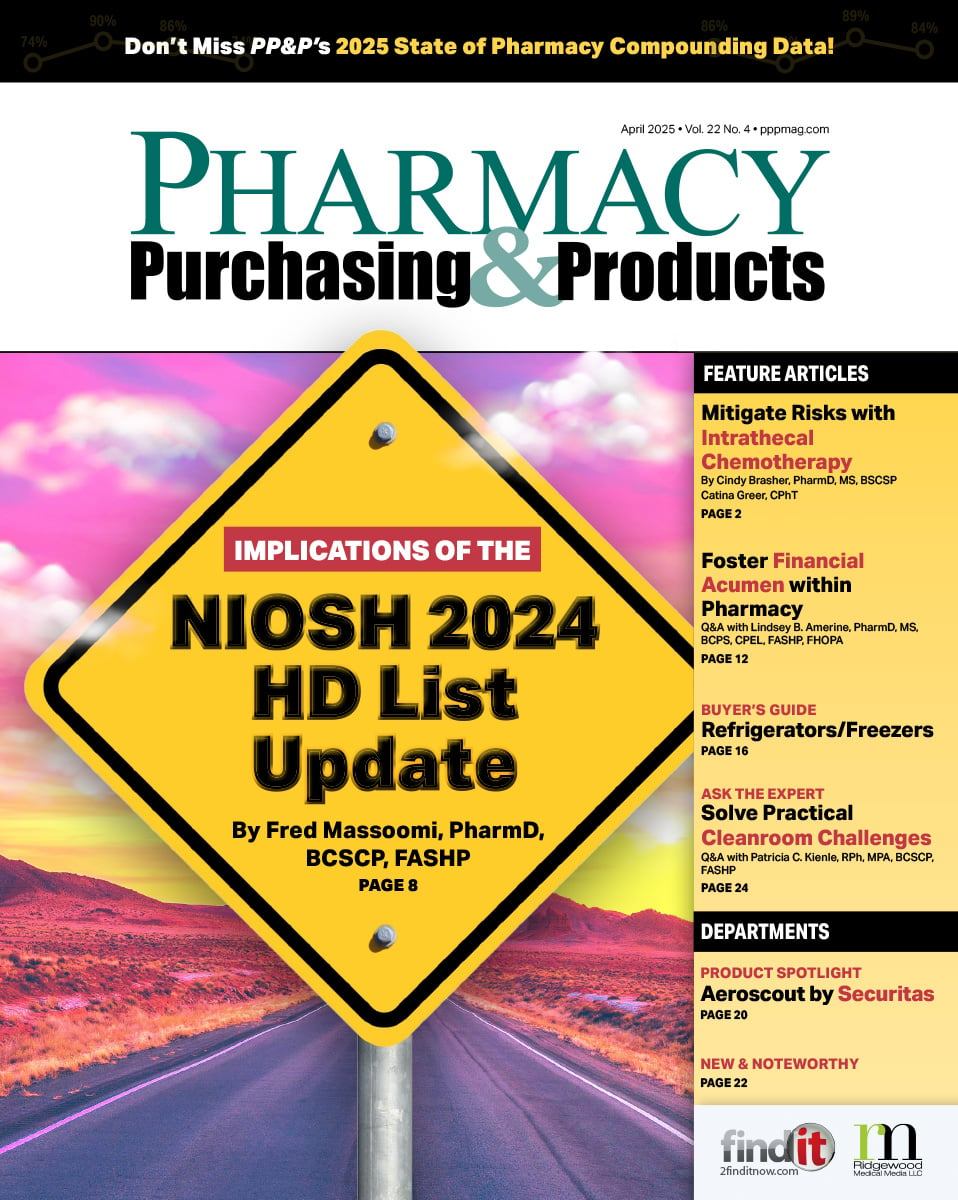- Show Menu
- Contact Us
- FAQs
- Reader Service
- Survey Data
- Survey Winners
- Testimonials
- Upcoming Events
- Webinars
- White Papers
Savvy and Anywhere RN from Omnicell
Medication management technology can help facilitate safe and efficient medication distribution, yet optimizing that technology requires the creation of efficient workflows and appropriate training. At Herrin Hospital—a 104-bed facility in Southern Illinois—we recently recognized that normal use of our automated dispensing cabinets (ADCs) had created a bottleneck in the medication distribution process, resulting in long lines and extended wait times for nursing. As the cabinets were originally acquired to streamline our workflow, we decided this was a good opportunity to reevaluate our ADC usage to enhance its effectiveness.
Prior to upgrading to ADC technology, we utilized a 24-hour, manual cartfill process using standard medication carts for distribution. Among the drawbacks of this approach, discontinued medications often remained available to nursing staff and new medications were sometimes slow to arrive on the unit. Furthermore, pharmacy staff spent a considerable amount of time filling and checking the unit-dose medication carts throughout the day. Both the pharmacy and nursing staff were unsatisfied with the system, and pushed for new, more efficient technology.
After acquiring the Omnicell ADCs and implementing a cartless model to distribute medications, we experienced significant wait times at the ADCs. It was at this time that nursing began building a case for acquiring Savvy mobile medication workstations and the Anywhere RN program from Omnicell.
Acquiring New Technology
The need for new technology was recognized and the budget was approved. We purchased the Savvy workstations for each nurse conducting a medication pass. The Savvy workstations are integrated with the Omnicell ADCs via the software program Anywhere RN, which enables nurses to select and queue medications in the ADCs remotely from any location, or directly from the workstation. The ability to perform this activity away from the ADC itself minimizes congestion in the medication room and allows nurses to work in a location where they will experience fewer interruptions. Because the workstations have individually locking drawers, each patient is assigned a drawer, allowing the nurses to safely pull and deliver medications for multiple patients at once. Another benefit of using the software on the workstations is that narcotics can be wasted within the Savvy and at the Omnicell cabinet, streamlining the management of controlled substances.

Initial Workflow Challenges
The initial implementation of the Savvy mobile workstations made it clear that additional workflow changes were needed to achieve our goal of shortened wait times at the ADC. We also discovered a few other inefficiencies in our workflow—nurses had to search for available workstations, which were being stored wherever a free outlet could be found; patient education materials required return trips to the ADC; and although the medical unit and IMCU each had an ADC, the units shared a single refrigerator, so a nurse who needed a refrigerated medication might have to log on to both ADCs to retrieve that one medication. Due to these issues, we decided to hold a Lean event to streamline the overall process.
Establishing Best Practice
A Kaizen event was held to evaluate our medication distribution process; this demonstrated that the most efficient workflow depended on the number of patients who required medications at a pass. To address this, we initiated two separate processes in order to determine which would be more efficient: a single-patient pass, where the nurse would queue a single patient’s medications on the ADC (using Anywhere RN) and then pull and deliver them before returning for the next patient; or, queuing and pulling all patient medications as a batch from the ADC and securely housing them in the Savvy to be distributed to patients in order. After performing a med pass time study using both methods, it was determined that the batch method was more efficient. Although both methods were an improvement on our original cartless model, performing a multi-patient medication pull resulted in the shortest wait times at the ADCs and also eliminated the need for the nurse to repeatedly return to the medication room for each patient.
In order to implement this new process, a detailed plan was developed for a mandatory training on the new procedure, which included a description of the benefits for nursing. Additional changes have addressed other barriers to optimal use of the workstations. The Savvy workstations are now configured for wireless printing to strategically located printers and a specific storage area has been designated for the available workstations with outlets at each parking spot to recharge the carts. Likewise, the large shared refrigerator has been replaced with four smaller refrigerators, allowing nurses to select refrigerated medications from either the medical unit or the IMCU ADC.
Benefits Realized
Once we implemented these changes, we quickly realized how much time and how many steps are saved through the use of the Savvy mobile medication workstations and Anywhere RN. Wait times at the ADC have been reduced to a maximum of six minutes, down from a high of 75 minutes. Because the multiple-patient medication pass has eliminated numerous trips between the units and the medication room, the average med pass time was reduced. These improvements have positively affected both pharmacy and nursing staff and they are now confident with this efficient process.
 Lori Sink, PharmD, is the director of pharmacy for Herrin Hospital, Southern Illinois Healthcare, in Herrin, Illinois.
Lori Sink, PharmD, is the director of pharmacy for Herrin Hospital, Southern Illinois Healthcare, in Herrin, Illinois.
Like what you've read? Please log in or create a free account to enjoy more of what www.pppmag.com has to offer.








